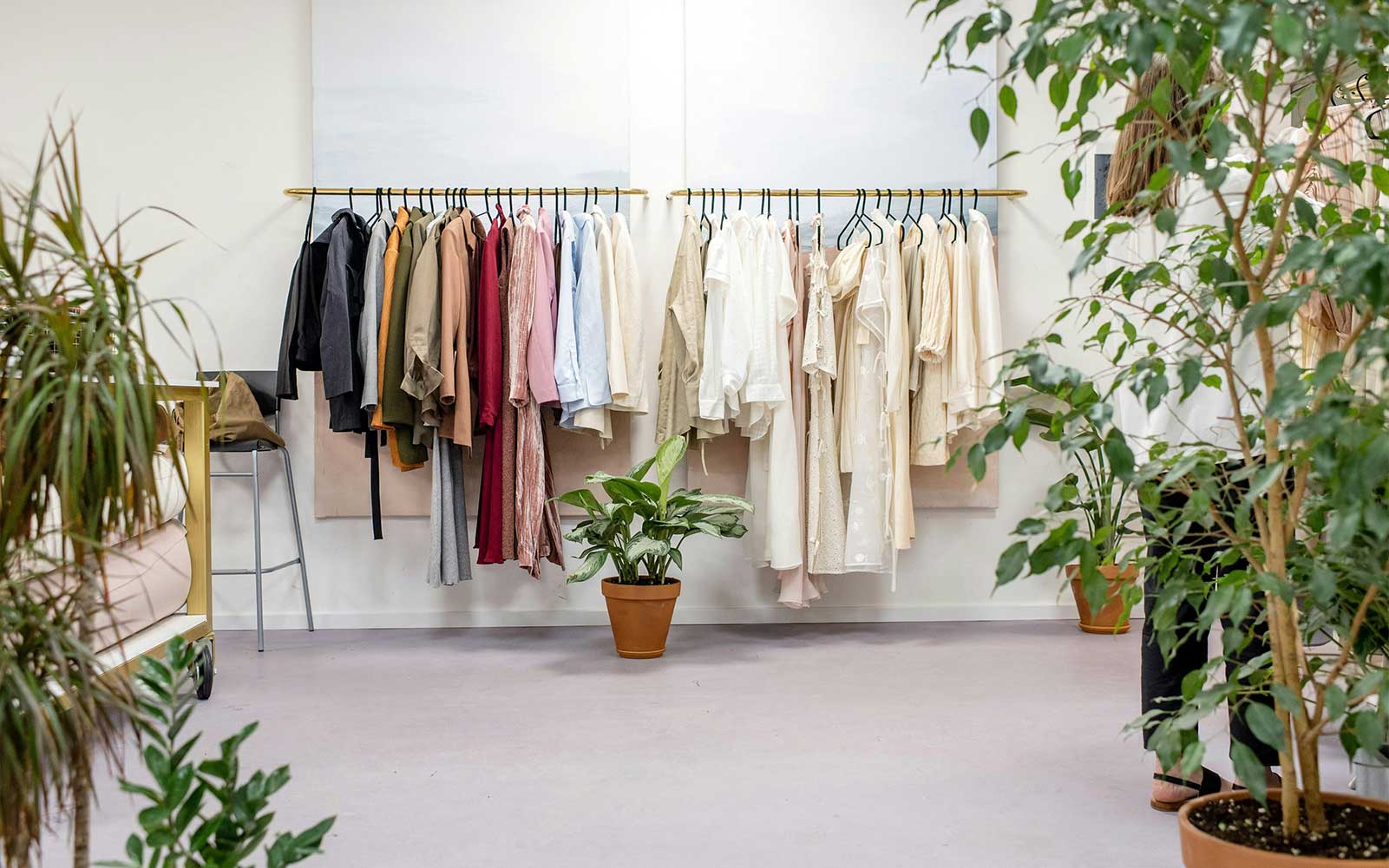
The Booming U.S. Secondhand Clothing E-commerce Market
Market Status and Growth Drivers
According to the latest research report from resale platform ThredUp, the U.S. online secondhand clothing market is expanding at an astonishing rate, projected to maintain a 13% compound annual growth rate through 2029, reaching a market size of $40 billion. This forecast is supported by multiple authoritative institutions like Credence Research, indicating that secondhand fashion has transitioned from a niche choice to a mainstream consumption trend.
Market drivers exhibit diversified characteristics: environmentally conscious Gen Z consumers, rational shopping choices under economic pressure, the pursuit of unique vintage styles, and improved e-commerce infrastructure collectively propel this wave. Notably, the U.S. policy of increasing tariffs on Chinese apparel continues to escalate—from the first tariffs in 2018-19 to the May 2024 hike under the Biden administration, followed by recent policy adjustments. These factors indirectly boost the secondhand clothing market as consumers seek alternatives to avoid price increases on new items due to tariffs.
Consumer Profiles and Demand Segmentation
The U.S. secondhand clothing market shows distinct consumer stratification:
- Eco-pioneers (about 35%): Primarily urban women aged 18-34 with higher education levels, acutely aware of the environmental costs of fast fashion (the global fashion industry accounts for 10% of carbon emissions), and view secondhand clothing purchases as part of sustainable living.
- Budget-conscious shoppers (about 40%): Middle-class households with annual incomes below $50,000 maintaining clothing quality amidst inflation, particularly favoring pre-owned items from accessible luxury brands like Coach and Kate Spade.
- Vintage culture enthusiasts (about 25%): Including millennials and Gen Xers pursuing 1990s and earlier vintage pieces, treating secondhand shopping as cultural expression, active on platforms like Depop and Etsy.
Demand hotspots show “polarization”: on one hand, high turnover of affordable basics (like secondhand staples from Gap and Old Navy), and on the other, fervent demand for scarce designer items (such as Vintage Levi’s 501 jeans selling at 300% premiums on specialized platforms).
Structural Opportunities for Chinese Sellers
Unlike traditional cross-border e-commerce dominated by large sellers, the secondhand clothing market offers unique competitive barriers breakthrough points for Chinese SMEs:
- Supply chain restructuring advantage: The secondhand market doesn’t rely on traditional apparel supply chains. Chinese sellers can systematically collect domestic idle resources (like export overstocks and surplus inventory) to build cost advantages. For example, professional “inventory hunter” teams in the Pearl River Delta acquire brand overstocks at ¥5-8 per kilogram, sorting them for 10-15x markups on U.S. platforms.
- Digital-native operation skills: Young Chinese entrepreneurs excel at shaping vintage fashion narratives through TikTok marketing. The “Shanghai Vintage Detective” account successfully turned Chinese retro jackets from the 90s into Etsy bestsellers by decoding historical textile craftsmanship.
- Cross-border logistics innovation: Adopting a “consolidation + professional cleaning” model—establishing QC centers in China before final-mile delivery via overseas warehouses—reduces average delivery time to 12 days, 40% more efficient than local U.S. secondhand sellers.
Product Selection and Value Mining
Successful secondhand apparel sourcing requires a three-dimensional evaluation system:
- Brand tier matrix:
- Accessible luxury (Michael Kors, Tory Burch): Fast turnover, 30-50% premium
- High-street fashion (Zara, H&M): High traffic, 15-25% profit margins
- Vintage collector tier (Chinese export brands from 80s-90s): High scarcity, 3-10x premiums
- Condition grading standards:
- NWT (New With Tags): Priced at 70-80% of retail
- EUC (Excellent Used Condition): Priced at 50-65%
- GUC (Good Used Condition): Priced at 30-45%
- Cultural value excavation:
A Shenzhen seller researched the history of a 1992 Nike jacket produced at a Guangdong OEM factory, marketing it as an “Asian manufacturing history artifact” to sell for 299(originally50).
Omnichannel Operation Strategies
Platform selection should follow the “traffic pyramid” principle:
- Top tier (Poshmark, The RealReal): For high-end designer items, 20-30% commission
- Mid tier (eBay, Mercari): For bulk sales, 100M+ monthly active users
- Base tier (Facebook Marketplace): For local quick turnover
Independent site success case: Hangzhou-based “Oriental Vintage” uses AR try-on and blockchain authentication to elevate average order value to $85 with 34% repeat purchase rate.
Content marketing mix:
- TikTok: Storytelling like “A Sweater’s 30-Year Journey”
- Instagram: Hashtag campaigns like #BuyerOutfitShowcase
- Pinterest: Visual inspiration boards like “Asian Vintage Mood”
Risk Management and Compliance
IP pitfalls:
- Authenticate luxury items rigorously; invest $200-500 in professional verification tools
- Avoid brand trademarks—e.g., phrase as “90s tweed jacket” instead of “Chanel-style”
Customs focus areas:
- Secondhand items require FDA-standard disinfection certificates
- Keep single shipment declarations under $800 for tax exemption
- Label as “Used Clothing – For Resale” to avoid being classified as waste imports
Quality control systems:
- Six-step inspection: moth damage → stains → odor → accessories → sizing → legible tags
- Professional cleaning equipment (¥20,000-30,000 investment) enhances product condition
Innovative Business Models
- Subscription boxes: Curated vintage monthly deliveries. Suzhou-based “East Meets West” blind boxes achieve 68% annual retention.
- Virtual resale: Create digital closets via 3D scanning; ship physically after purchase confirmation to reduce inventory costs.
- Take-back programs: Incentivize U.S. consumers to mail back used clothes for shopping credits, building cross-border circular economies.
- Cultural IP collaborations: Partner with independent designers to upcycle fabrics into “Sino-American vintage collabs” for differentiated supply.
Future Trends
- AI pricing tools: Image recognition auto-assesses era, condition, and market trends for 5x pricing efficiency.
- Sustainability certification: Eco-labels like “carbon footprint tags” will become new premium drivers.
- Virtual fitting tech: 3D body-matching will reduce return rates below 8%.
- Regional specialties: Secondhand items with cultural signatures (e.g., 90s Shanghai wool coats) will form niche markets.
For Chinese cross-border sellers, the U.S. secondhand clothing market is evolving from “information arbitrage” to “value innovation.” Entrepreneurs who build systematic supply chains, specialize in vertical categories, and master product storytelling will achieve lasting competitiveness in this 40billionblueocean.Thekeyliesinbalancingbusinessefficiencywithculturalsensitivity,genuinelyintegratingsustainabilityintobusinessmodelsratherthanusingitasamarketinggimmick.In3−5years,thissectorispoisedtoproducemultipleChinesecross−borderbrandsexceeding50 million in annual sales.



